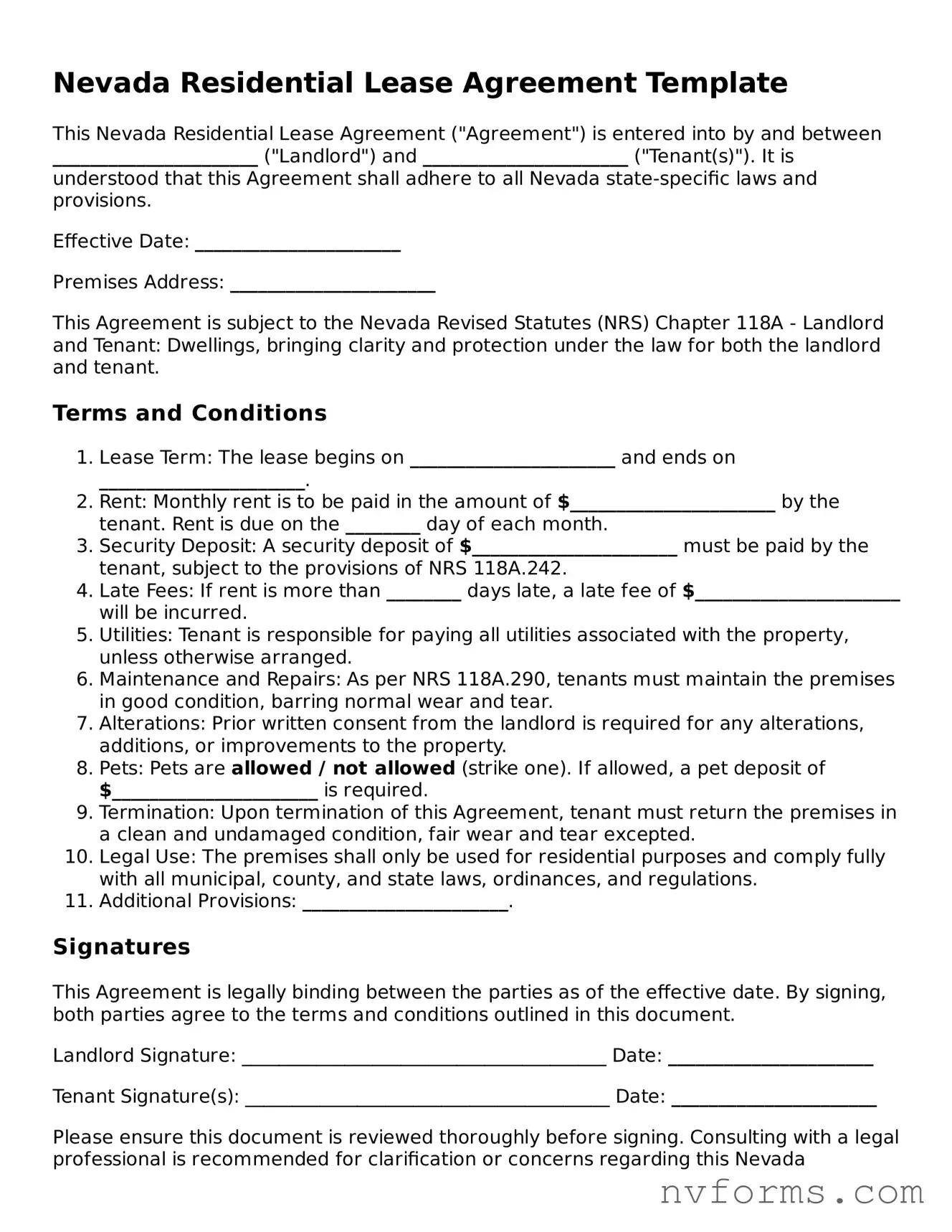Nevada Residential Lease Agreement Template
This Nevada Residential Lease Agreement ("Agreement") is entered into by and between ______________________ ("Landlord") and ______________________ ("Tenant(s)"). It is understood that this Agreement shall adhere to all Nevada state-specific laws and provisions.
Effective Date: ______________________
Premises Address: ______________________
This Agreement is subject to the Nevada Revised Statutes (NRS) Chapter 118A - Landlord and Tenant: Dwellings, bringing clarity and protection under the law for both the landlord and tenant.
Terms and Conditions
- Lease Term: The lease begins on ______________________ and ends on ______________________.
- Rent: Monthly rent is to be paid in the amount of $______________________ by the tenant. Rent is due on the ________ day of each month.
- Security Deposit: A security deposit of $______________________ must be paid by the tenant, subject to the provisions of NRS 118A.242.
- Late Fees: If rent is more than ________ days late, a late fee of $______________________ will be incurred.
- Utilities: Tenant is responsible for paying all utilities associated with the property, unless otherwise arranged.
- Maintenance and Repairs: As per NRS 118A.290, tenants must maintain the premises in good condition, barring normal wear and tear.
- Alterations: Prior written consent from the landlord is required for any alterations, additions, or improvements to the property.
- Pets: Pets are allowed / not allowed (strike one). If allowed, a pet deposit of $______________________ is required.
- Termination: Upon termination of this Agreement, tenant must return the premises in a clean and undamaged condition, fair wear and tear excepted.
- Legal Use: The premises shall only be used for residential purposes and comply fully with all municipal, county, and state laws, ordinances, and regulations.
- Additional Provisions: ______________________.
Signatures
This Agreement is legally binding between the parties as of the effective date. By signing, both parties agree to the terms and conditions outlined in this document.
Landlord Signature: _______________________________________ Date: ______________________
Tenant Signature(s): _______________________________________ Date: ______________________
Please ensure this document is reviewed thoroughly before signing. Consulting with a legal professional is recommended for clarification or concerns regarding this Nevada Residential Lease Agreement.
